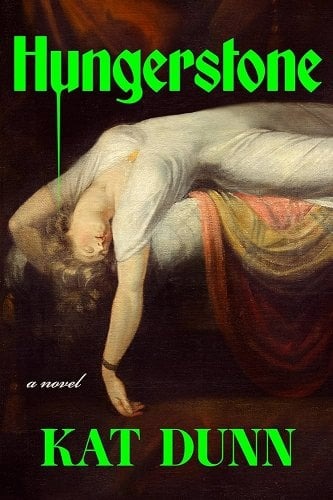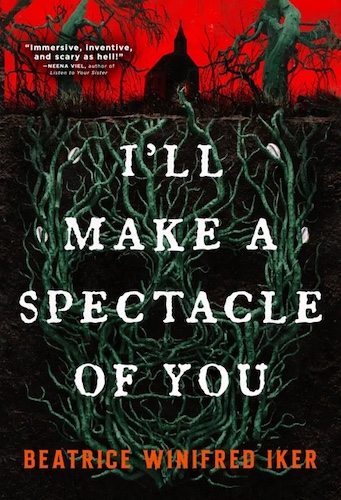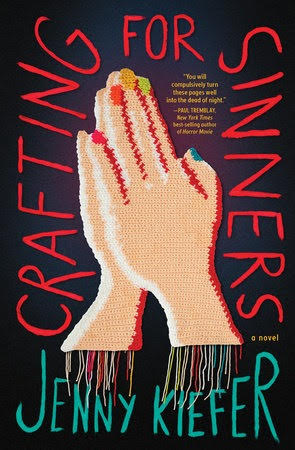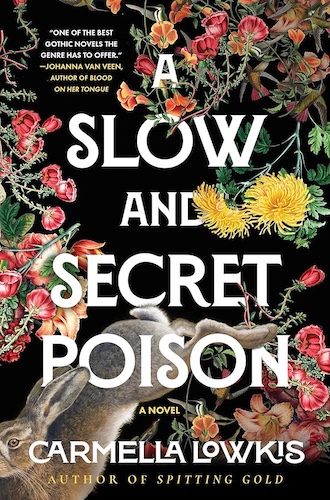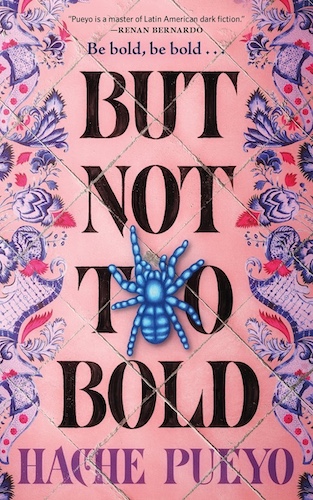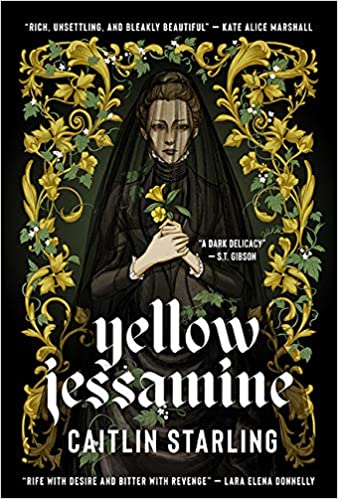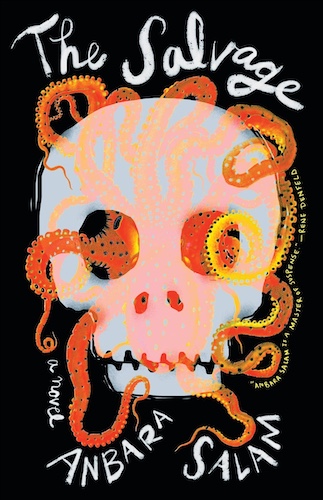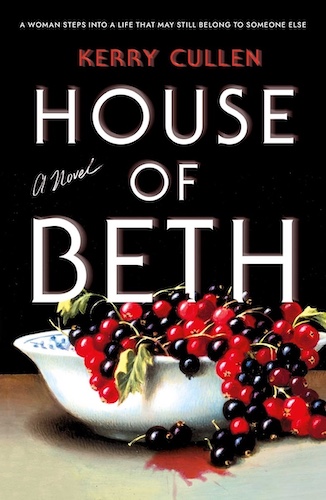Hungerstone was one of my most-anticipated books of 2025, but it ended up being a disappointment. I love Carmilla and queer Carmilla retellings, not to mention sapphic vampire stories in general, so I thought this would be an easy win. Instead, I ended up feeling like this was a novel split in two, where theRead More
Southern Gothic Horror Meets Dark Academia: I’ll Make a Spectacle of You by Beatrice Winifred Iker Review
In I’ll Make a Spectacle of You, we meet Zora Robinson, an ambitious graduate student and Hoodoo practitioner, as she enters her first year at the most respected HBCU in the country. Bricksbury University has a long and storied history, with more than a few secrets, the biggest of all involving a beast that roams theRead More
Gory Survival Horror at a Craft Store: Crafting for Sinners by Jenny Kiefer Review
Crafting for Sinners by Jenny Kiefer is both a visceral survival horror and a balm to survivors of homophobic violence perpetrated by religious institutions everywhere. Once upon a time, Ruth was engaged to a man named Charlie, on track to become a picture-perfect, god-fearing, trad wife. Until, that is, Charlie becomes increasingly more involved with NewRead More
A Deliciously Toxic Sapphic Gothic Thriller: A Slow and Secret Poison by Carmella Lowkis
You know when a bunch of factors work together in your favour to make a book particularly immersive for you? This was my experience, earlier during a holiday weekend (late October), when I read Carmella Lowkis’s sophomore novel A Slow and Secret Poison (February 10, 2026). A wonderfully atmospheric and twisty, somewhat slow-burn sapphic horror thrillerRead More
A Delicious and Grotesque Bite of a Novella: But Not Too Bold by Hache Pueyo
I picked up But Not Too Bold by Hache Pueyo because I heard it was a fun sapphic horror novella, and because I’m always eager to read more genre fiction in translation. (This was originally published in Portuguese and was translated by the author.) At barely over 100 pages, it’s a quick sprint, perfect to read inRead More
Conversion Camp is Hell: Cuckoo by Gretchen Felker-Martin
Cuckoo opens in 1995 with a true-to-life horror situation: seven queer kids being sent to a conversion camp in the middle of the desert. The camp is your classic nightmare: brutal labor conditions under the supervision of uber-religious and questionable leadership. Physical punishment from both counsellors and fellow campers. Truly mystifying lessons that are both boringRead More
The Indefinable, Creeping Dread of Yellow Jessamine by Caitlin Starling
Caitlin Starling’s Yellow Jessamine is the novella to reach for on a dreary day. It was gray and rainy in late October when I read it, so the setting was perfect. Starling’s novella is a thoroughly gothic horror with light sapphic undertones, so if the yearning™ isn’t your thing, this may not be the title for you. Read More
A Claustrophobic Sapphic Gothic: The Salvage by Anbara Salam Review
Before I get into it, I will say that my favourite part of this book was how information was slowly revealed, so I recommend going into this without knowing much about it. If you’re in the mood for a claustrophobic gothic novel set on a small, frozen-over island, pick this one up and skip overRead More
Embracing the Absurd Jackpot of Existence: Lucky Day by Chuck Tingle Review
If the universe proves itself to be utterly meaningless, what do you do next? For Vera, the narrator of Lucky Day by Chuck Tingle, the answer is: rot in your dead mother’s house for four years in a general nihilistic malaise until a government agent bursts through your door because he needs your help takingRead More
The Horror of Getting Everything You Thought You Wanted: House of Beth by Kerry Cullen Review
Cassie is a bisexual woman with harm OCD. She is struggling at an entry level publishing job with a boss she hates, reading manuscripts at all hours despite no longer being sure this is the industry for her. She loves her girlfriend, Lavender, but feels like Lavender would be horrified if she knew about herRead More
- 1
- 2
- 3
- …
- 16
- Next Page »
